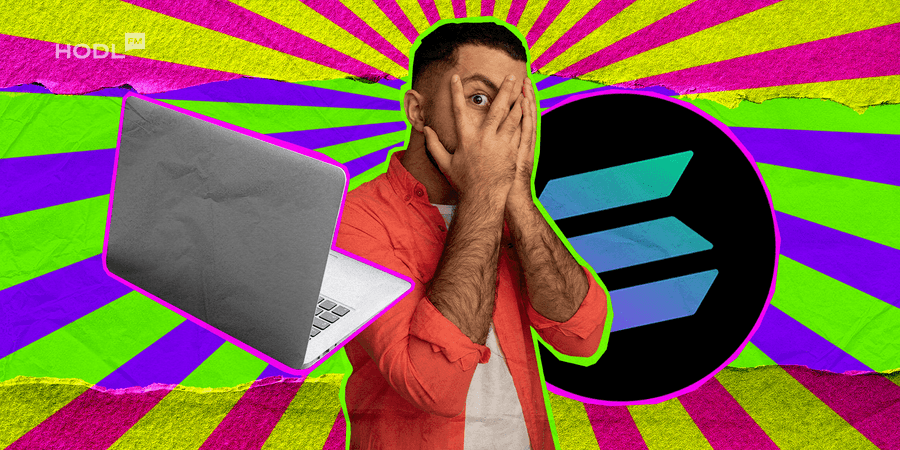Eclipse, the blockchain team combining Solana’s Virtual Machine (SVM) performance with Ethereum’s liquidity and security has given so many crypto users a reason to look forward to October.
In an interview at the Solana Breakpoint Conference in Singapore on September 20, Vijay Chetty, the CEO of Eclipse Labs, revealed that their “Public Mainnet will be launching toward the end of October”.
ECLIPSE POISED TO ROLL OUT 'SOLANA ON ETHEREUM' L2
— Mario Nawfal’s Roundtable (@RoundtableSpace) September 20, 2024
Eclipse is launching its mainnet by the end of October, mixing Solana’s speed with Ethereum’s vibes.
CEO Vijay Chetty shared this at the Solana Breakpoint conference, revealing they're in developer mode now.
By teaming up… pic.twitter.com/j0rG2022H2
But it’s not just another mainnet; the blockchain team aims to create something massive by bringing “Web2 scale to Web3.” This move will see them combine the best of Ethereum, Solana, and Celestia, the L-1 blockchain, which they will use as their main data storage platform.
Chetty emphasized the importance of their approach of combining the best of all the platforms they’re using. He said it’s a vision they very much subscribe to. This is because, apart from making a better product, it also helps them avoid the worst features of those blockchains, at least, in theory.
Explaining the company’s radical approach, Chetty mentioned Solana’s decentralization constraints and Ethereum’s slow transaction throughput on the base layer, which have hamstrung both of these blockchains from reaching widespread success.
Eclipse Everything.
— Eclipse (🐮,🌑) (@EclipseFND) September 19, 2024
We will be the hub between Ethereum and Solana, and more importantly, the assets $ETH and $SOL, powered by @hyperlane.
As of today, USDC, SOL, and WIF bridging will be live from Ethereum and Solana.
Learn more: https://t.co/OsGOFoeRmp pic.twitter.com/Xo77WHWcna
He explained that while Ethereum L-2s have improved transaction throughput, many other blockchains store data off-chain due to costs. Eclipse’s new integration plan with Celestia aims to fix that issue.
However, while Eclipse’s new plan sounds really good, it doesn’t mean they won’t have some serious competition. There’s a lot of competition in the Ethereum layer-2 market.
Some of Eclipse’s most apparent competitors include Arbitrum One, Base, and OP Mainnet. According to the data provided by L2beat, those three are the biggest when it comes to Ethereum L-2 solutions, with respective values of $13.7 billion, $6.5 billion, and $6 billion.
According to Chetty, Eclipse plans to compete with the big guns of the L-2 market. It will compensate by integrating several existing “Solana blue chip apps” and creating several native apps as well.
Eclipse’s lineup of Solana apps that would expand to Eclipse will include decentralized exchanges Mango and Orca as well as the popular lending and borrowing platform Solend. Chetty, however, mentioned that some of these apps would not be using their current names; instead, they would be rebranded after their integrations.
Eclipse’s plan is a very ambitious one, but if they can pull it off, it will be worth it. Crypto and blockchain tech are nowhere near perfect yet and could use innovations like Eclipse is planning.
Eclipse will support more assets between Ethereum, Solana, and Eclipse via Hyperlane, enabling assets to be utilized in turbocharged DeFi dApps.
— Eclipse (🐮,🌑) (@EclipseFND) September 19, 2024
Crypto does not have a blockchain that sits at the intersection of Ethereum and Solana. That changes today.
The goal of the project is to combine Ethereum’s security with Solana’s speed and Celestia’s cost-effective and reliable data storage capabilities to bring their “Web2 scale to Web3” dream to life.
It’s a brilliant plan everyone hopes they can pull off and we can’t wait for the launch in October.

Disclaimer: All materials on this site are for informational purposes only. None of the material should be interpreted as investment advice. Please note that despite the nature of much of the material created and hosted on this website, HODL FM is not a financial reference resource and the opinions of authors and other contributors are their own and should not be taken as financial advice. If you require advice of this sort, HODL FM strongly recommends contacting a qualified industry professional.





